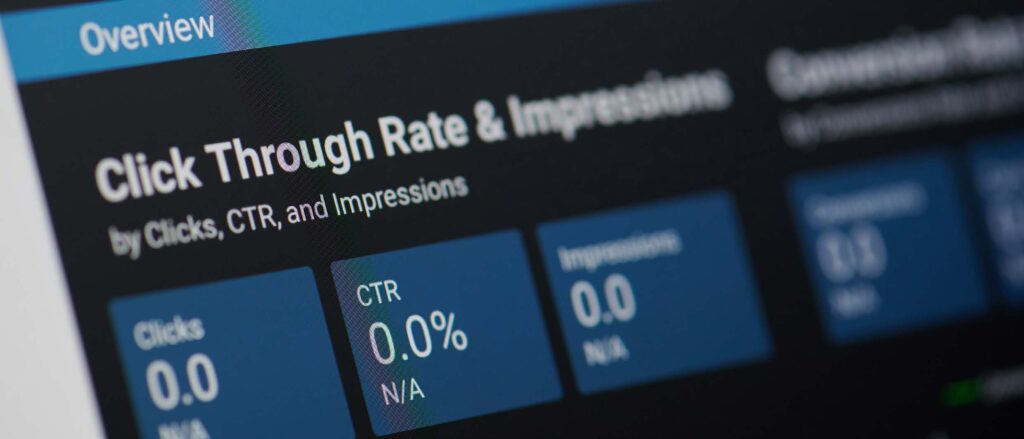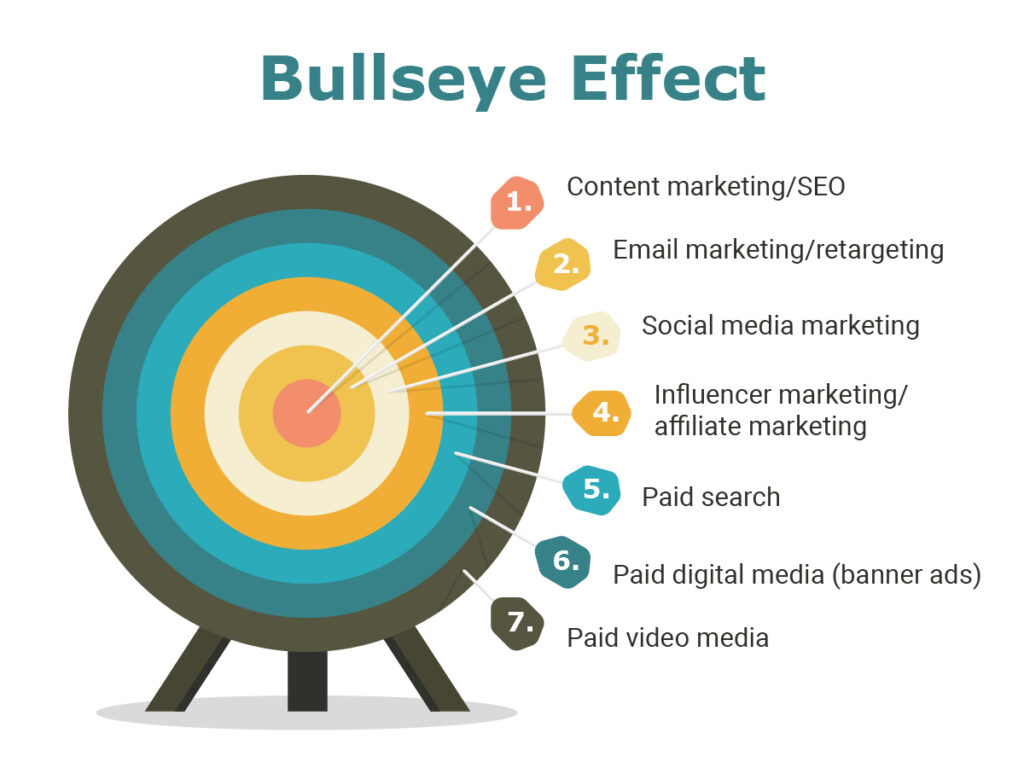This eGuide will show the benefits of an MSP digital marketing strategy vs in-house marketing teams.
Digital marketing is growing every day, and it’s a full-time job for more than one person to work all of these avenues every week. This is where an MSP digital marketing strategy comes in handy.
You already know digital marketing matters, and you might be actively working on several social media apps already. What you might not know is just how much time it takes to really market your business to the many platforms available to consumers these days.
What is an effective digital marketing strategy?
With just 11 steps, you can optimize your digital marketing strategy with measurable results. The goal is to see results in a competitive market where profits are lower than they were before Covid-19 shook the world.
Here are just a few of the ideas covered in this eGuide:
- Assessing your market
- Website improvement areas
- Mobile device optimization
- Current SEO optimization tips
- How to better connect with your audience
- Social media marketing ideas
- Email marketing improvement
- PPC and analytics
- Building a scalable model
Why an outsourced MSP is your new best friend?
Keeping up with constantly changing digital marketing applications is exhausting, to say the least. Even the most social media-savvy employees will find themselves lost in a sea of trending platforms they’ve never even used. An MSP provider will assess your business, create a personalized marketing plan, recommend new strategy elements, and measure results along the way.
Tempesta Media guides you through a performance marketing-based program resulting in a turn-key solution to achieving your marketing goals. You can take the pressure off your own employees and let trained experts offer a transparent campaign full of the latest digital marketing ideas and tips.
Table of Contents
Introduction
The post-COVID-19 environment is creating a variety of challenges for businesses. Many organizations are rethinking their approach to sales and marketing. The current trend is to prioritize measurable results in a market where heightened competition and shrinking profit margins are a reality.
Getting some outside help can make a difference. Outsourcing marketing can help manage costs and result in a concrete ROI that is easy to track and scale.
The managed service provider model is particularly relevant to the challenges businesses are facing. As a growing number of organizations turn to MSPs, these vendors are helping businesses reach their marketing goals with a personalized and holistic approach to digital marketing.
The following guide will take a closer look at the steps an MSP typically follows when developing a marketing plan for a customer, giving you a better idea of what you can gain from working with an MSP.
Step 1: Assess and audit existing marketing efforts
Rather than starting from scratch, a managed service provider will typically take the time to assess your existing online presence. The goal is to better understand your strengths and weaknesses. With marketing budgets representing 9.5% of a business’s revenues on average, understanding where your marketing spending goes and what you get out of it can reveal valuable insights.
An MSP digital marketing partner can conduct an audit or assessment to support the following goal:
- Identify your strengths and weaknesses.
- Better understand the goals that have driven your marketing efforts so far.
- Uncover historical data regarding marketing performance to support better decisions in the future.
- Gain unique insights into the preferences and behaviors of your niche.
- Take an inventory of existing marketing assets. The MSP can incorporate these assets into the new marketing strategy after optimizing them.
- Paint a comprehensive picture of your marketing efforts and their results across different channels.
Having an MSP conduct a thorough assessment will create a baseline for your marketing efforts. The managed service provider can build on what you have achieved so far and take your marketing strategy to the next level while minimizing disruption.
This baseline will also help the MSP establish realistic goals. Plus, an assessment can make you more reactive by revealing areas in urgent need of attention. It can also help you increase your marketing ROI by identifying existing assets the MSP can leverage with a few tweaks.
Step 2: Take external factors into consideration
Now that your MSP digital marketing partner has a better understanding of internal factors, it’s time to look at competitors and market trends.
Analyzing external factors makes you more reactive. It can also improve resiliency. Your MSP can find new opportunities by looking for niches or channels that competitors aren’t prioritizing.
Understanding how external factors affect your business is more important than ever. Many industries are changing due to the acceleration of digital transformation. The Consumer Price Index exceeding 8.6% is also affecting demand and reducing profit margins for many businesses.
An MSP can make a difference by identifying any direct response gaps. Your MSP partner will analyze the typical customer journey. They can then look for areas where you’re not addressing an existing need. Something as simple as developing a new landing page can bridge this gap and streamline the user’s journey.

When you outsource marketing, you will also benefit from the expertise of a team of professionals. These experts can assess your competitors’ marketing efforts. Your MSP can then recommend some relevant strategies:
- Prioritize the channels, niches, or keywords your competitors are overlooking. This practice reduces direct competition.
- Adopt the latest trends or channels ahead of the competition to gain an advantage.
- Uncover your key differentiators and move these elements forward to gain market shares.
For instance, competing based on pricing isn’t always possible, especially when you’re facing a large competitor. B2B marketing services often focus on developing educational experiences that support the buyer’s journey to make UX the key differentiator in this situation.
Step 3: Improve the user experience with a functional website
From organic platforms to paid channels, the goal of most marketing efforts is to funnel leads to your website. This approach turns your website into a central element.
Before implementing content marketing solutions that will drive traffic to your site, an MSP digital marketing partner can help optimize your website. Your optimized site will become a reliable funnel that boosts your conversion rate.
- Brand awareness is often a leading goal behind content marketing efforts. Does your site support your branding efforts with a recognizable design and color scheme?
- Another key goal for your website is to support the tasks users will accomplish during their journey. An MSP can map this journey, identify important tasks, and assess how well your site structure and content facilitate task completion.
- Technical elements matter. An MSP can recommend steps you could take to improve your site’s loading time, a factor that is increasingly important with 58% of Internet traffic coming from mobile devices.
Working with an MSP also means you’ll get help optimizing different aspects of your site to deliver a more streamlined experience. Your optimized site will support various tasks throughout the buyer’s journey, help visitors discover more content, and turn clicks into leads.
Depending on the outcome of the website assessment, your managed service provider might implement the following strategies:
- Update website copy to engage users and deliver the information they need to complete a task.
- Improve the navigation scheme to make key landing pages easier to find and support pivotal tasks in the user’s journey.
- Introduce a secondary navigation scheme to declutter your site, while facilitating content discovery for longer sessions.
- Develop an internal linking scheme for SEO purposes and to promote content discovery.
- Make key takeaways immediately identifiable with white space, bullet points, and other design techniques that make content stand out.
- Provide visitors with a clear next step in their journey by crafting compelling and highly visible calls to action.
Step 4: Drive traffic with the best on-site SEO practices
When an MSP digital marketing partner assesses your existing online presence, one common goal is auditing your on-site SEO practices. The MSP can use this information to create a new SEO plan for your site.
Optimizing your site will make navigation easier. A website overhaul will also align your on-site SEO practices with the signals search engines look for when ranking pages.
Working with a managed service provider means you’ll have access to experienced SEO specialists. Here are a few examples of SEO strategies an MSP can recommend:
- Improve your website structure to facilitate crawling and establish a clear hierarchy between your different pages.
- Optimize metadata to help search engines identify the main topic of a page. Metadata includes your URLs, title tags, meta descriptions, image tags, and more.
- Conduct keyword research to determine the most relevant search terms to target with your content.
- Leverage existing content. An MSP can add new keywords or improve a page’s structure to update existing assets and improve their ranking.
- Implement responsive design techniques for a mobile-friendly experience.
- Improve your site’s loading speed. Faster speeds can reduce your bounce rate and improve rankings.
- If applicable, add name, address, and phone number references to your content along with implementing other local SEO techniques.
A managed service provider can also help make you more reactive and anticipate the next search engine algorithm update. Plus, conducting a thorough market analysis means your MSP partner can help you target the keywords your competitors might be overlooking.
When you outsource marketing to an MSP, you can count on this partner to develop a holistic marketing plan. This holistic approach can give you an advantage since Google’s helpful content update puts people-first content forward and emphasizes the importance of the link between content quality and SEO.
Step 5: Boost traffic and domain authority with off-site SEO strategies
Replacing paid ads with an SEO strategy that prioritizes organic traffic resulted in a 600% increase in referral leads over a period of 12 months for a Tempesta Media customer.
This case study is an example of the impact proper off-site SEO strategies can have on your bottom line.
Google and other search engines assess the relevance, quality, and expertise of your content based on a number of on-site factors, but off-site factors are just as important in establishing domain authority.
A managed service provider can use the following strategies to increase your domain authority and boost organic traffic:
- Look for off-site SEO practices that might hurt your domain authority when conducting an assessment of your online presence.
- Identify the best domains to get backlinks from, increasing your authority and yielding more traffic.
- Connect your SEO efforts with content marketing solutions and branding strategies to attract high-quality backlinks.
- Establish a link between your SEO efforts and your social media presence to leverage this channel, driving organic traffic to your site and boosting rankings.

Step 6: Connect with your audience thanks to quality long-form content
B2C and B2B marketing services can develop content in a variety of formats depending on your target audience and unique goals.
However, prioritizing long-form content marketing and placing this format at the center of your sales funnel will often help you get the most out of your marketing efforts.

Long-form content improves visibility. This content format aligns with the kind of helpful, peoplefirst content that Google’s latest algorithm update favors.
Plus, long-form content can drive social media shares, generate backlinks from reputable sources, and help you rank for trending keywords in your niche.
The purpose of long-form content is to keep users engaged and support a variety of tasks along the buyer’s journey. From generating early awareness to delivering advanced educational material to help prospects compare different options, you can use content to create value at every stage of the journey.
Content also acts as a catalyst. A strong content marketing strategy creates a series of touchpoints that provide prospects with the right information at the right time. While content that targets the early stages of the sales funnel typically delivers the most value, a strategic content series can improve conversions at every stage.
An MSP digital marketing vendor can take your content creation efforts to the next level:
- Keeping up with a content creation schedule can be challenging with an in-house team due to the time and resources involved. An MSP significantly increases your ability to publish fresh content regularly.
- Outsourcing content creation means you’ll have access to a team of experts who possess a mix of industry expertise and strong writing skills to engage your audience.
- These experienced content creators know how to write and format content to enhance engagement and deliver the main takeaway, even if visitors are only skimming your pages.
- Relying on the same partner for your SEO campaigns means you’ll get optimized content that targets trending keywords for your niche.
- Having an MSP conduct a market assessment can reveal content creation opportunities for niches your competitors are overlooking. An MSP can also identify the most profitable topics or formats for your audience.
- A growing number of marketers are adopting an episodic approach to content creation to delve into complex topics over the course of a few weeks or months. An MSP can help you embrace this trend by developing relevant topics for your niche and following a publication schedule.
- Content marketing solutions that include analytics help you get more out of this channel by tracking performance. Data can inform future strategic decisions and improve ROI.
Step 7: Create genuine connections with social media marketing
Developing a presence on social media is an opportunity to connect and engage with your audience on a channel they interact with daily. In an increasingly digital marketplace, social media can help you stand out by creating connections that feel genuine.

Other benefits include growing your audience, generating awareness, and positioning yourself as a go-to resource for information and advice.
Social media isn’t just for B2C marketing. Among B2B marketers, 54% plan on making LinkedIn one of their top priorities in the near future, illustrating a shift toward a more organic way of generating B2B leads.
Managing social media marketing campaigns in-house isn’t without its share of challenges. An MSP digital marketing partner can help you adopt a strategic approach to social media marketing instead:
- An MSP can optimize your social media presence to get your posts and profiles to rank consistently in search results and improve your discoverability via social media search features.
- Having an MSP work on your content marketing and social media marketing campaigns means you will get a steady stream of social media posts that engage and convert.
- A marketing partner can also develop a consistent branding strategy to make your business more recognizable on social media and other channels.
- 54%
54% of B2B marketers plan on making LinkedIn their top priority
- $22.2b
Influencer marketing by 2025 worth up to $22.2b
For businesses with a mature social media presence, an MSP can implement additional strategies to explore new ways of sharing content and creating value:
- Influencer marketing is a prevalent trend in most consumer markets. It’s also shaping the B2B niche, and the B2B influencer marketing industry could be worth $22.2 billion by the end of 2025. An MSP can help you navigate this new trend and form the right influencer partnerships.
- An MSP can also help you stand out with an employee advocacy program. You can work with social media marketing experts to develop a framework that will empower employees to create and share content to give your audience a unique look behind the scenes.
- As spending increases on social media ads, this channel becomes increasingly competitive and calls for a strategic approach. An MSP can make a difference by crafting ads that engage and convert after analyzing your market to identify the profiles to target.
Don’t make the mistake of overlooking social media marketing. Tempesta Media was able to increase brand queries by 119% for a customer after implementing a holistic strategy that mixed content marketing, social media posts, and an employee advocacy program.
Step 8: Inform and nurture with email marketing
From dodging spam filters to writing the perfect subject line so your emails are opened, email marketing can get technical.
 With a proper strategy in place, email marketing can become a cornerstone of your digital presence:
With a proper strategy in place, email marketing can become a cornerstone of your digital presence:
- Email is an ideal channel for nurturing leads and existing clients. Staying in touch with a newsletter is the second most common content marketing strategy in the B2B niche.
- Sending an email series is a popular strategy for helping prospects progress along the sales funnel.
- Direct response email campaigns are an effective method for boosting lead generation and sales.
- Embracing personalization with your email marketing campaigns can make recipients feel valued. In fact, a personalized email is 26 times more likely to result in a recipient opening the message.
A managed service provider can make a significant difference when it comes to implementing effective email marketing strategies:
- You’ll get to work with professionals who have years of experience creating eyecatching subject lines to immediately engage recipients.
- An MSP digital marketing vendor can help with segmentation and other personalization strategies to deliver relevant content.
- When you outsource marketing, you’ll get the benefit of a partner who develops content with your email marketing efforts in mind to drive organic traffic to your blog or other channels.
- A marketing partner can develop a thorough understanding of your customers to create an email series that reflects the unique challenges and touchpoints of their journey.
- Relying on an MSP for email marketing and other channels also results in a more consistent experience and branding, increasing awareness and recognition.
Step 9: Invest in PPC
Organic leads remain a priority for many businesses, but PPC campaigns can complement organic channels.
With the end of third-party cookie support, PPC campaigns are shifting away from retargeting. The focus is now on keyword-based strategies to capture searches that indicate tasks related to a buying journey.
B2B marketing services can help you overhaul an existing PPC strategy. You can get help with leveraging first-party data instead of third-party cookies. Plus, experts can identify the right keywords for targeting users with a buying intent.

A managed service provider can yield other benefits for your PPC campaigns:
- Experts can create ads that are highly recognizable and engaging to drive conversions.
- An initial market assessment will help your MSP identify the best channels to reach your target audience with paid ads.
- Analyzing what competitors are doing with PPC will allow an MSP to recommend the most profitable keywords to target with your ads.
- Relying on the same partner for your content marketing efforts makes it easier to address users’ expectations with landing pages that deliver what an ad promises.
Step 10: Track results with analytics
Recent research reveals that marketing analytics is one of the top capability gaps businesses encounter. Not measuring the outcome of your marketing campaigns makes it difficult to track your ROI. It also limits your ability to make informed decisions.
 B2C and B2B marketing services can implement analytics strategies on your behalf. You’ll get valuable insights into your audience’s behavior and see how your different marketing campaigns perform.
B2C and B2B marketing services can implement analytics strategies on your behalf. You’ll get valuable insights into your audience’s behavior and see how your different marketing campaigns perform.
Outsourcing marketing to an MSP means you’ll have access to analytics experts who know how to work with data and choose the most relevant KPIs for your goals.
You’ll learn more about your target audience, the channels that yield the best ROI, and the content formats or topics that perform well. These insights will help your MSP make customized recommendations for developing future marketing campaigns. Analytics will also improve transparency regarding how your MSP digital marketing partner performs.
Step 11: Build a scalable model
Adopting a scalable model can make you more reactive to the latest changes in your industry and become one of the first businesses to adopt new marketing trends. It also ensures continued success as your organization grows and its goals evolve.
An MSP can use their expertise, and the unique insights derived from conducting an assessment of your marketing efforts and industry, to develop a scalable model:
- Content marketing solutions can adapt your publication schedule to meet your short-term goals and changing needs.
- You can add or remove capabilities as needed. You can, for instance, extend the scope of your marketing activities to develop a presence on a new channel or target a new niche.
- The MSP model can adapt to fluctuations in your budget.
- Your MSP partner can also rely on the latest marketing tools and best practices, such as automation, to build a scalable model while cutting costs.
Summary
What happens when you outsource marketing to an MSP? The approach can vary from one vendor to another, but you can expect your new marketing partner to follow these steps:
- Working with an MSP usually entails an initial assessment stage. The vendor will learn more about your current marketing strategies and assets before analyzing your market and competition.
- Next, the MSP will use its findings to develop a personalized marketing plan. The plan will initially focus on core areas like your website, SEO practices and content marketing to prioritize generating organic traffic and leads.
- Your MSP can recommend incorporating additional elements into your marketing strategy based on your unique goals. Examples include social media, paid ads and email marketing.
- The marketing partner you work with will track results to achieve continuous improvement and turn your marketing plan into a scalable model for long-term success.
This framework reflects the way Tempesta Media works. As a managed service provider, our goal is to develop a highly personalized and effective marketing plan for each customer.
The first step in our performance-based marketing program is a thorough 90-point assessment called Prova. This comprehensive audit takes two weeks to complete. It gives us a baseline for your current marketing practices, your competitors, and so much more.
After completing this initial assessment, we use our Bullseye Effect solution to develop a highly personalized strategy. Bullseye Effect is a turnkey solution that includes a wide range of modules that we can combine to build a holistic marketing strategy.
From content creation to SEO, social media, paid ads or influencer marketing, Bullseye Effect gives you access to everything you need to reach your marketing goals. Working with modules also allows us to adapt to your budget.
We rely on a team of experts to oversee every step of this process, and our analytics solutions support ongoing optimization for your marketing campaigns while improving transparency.

Get in touch with Tempesta Media today and learn more about how an MSP can make a difference.











